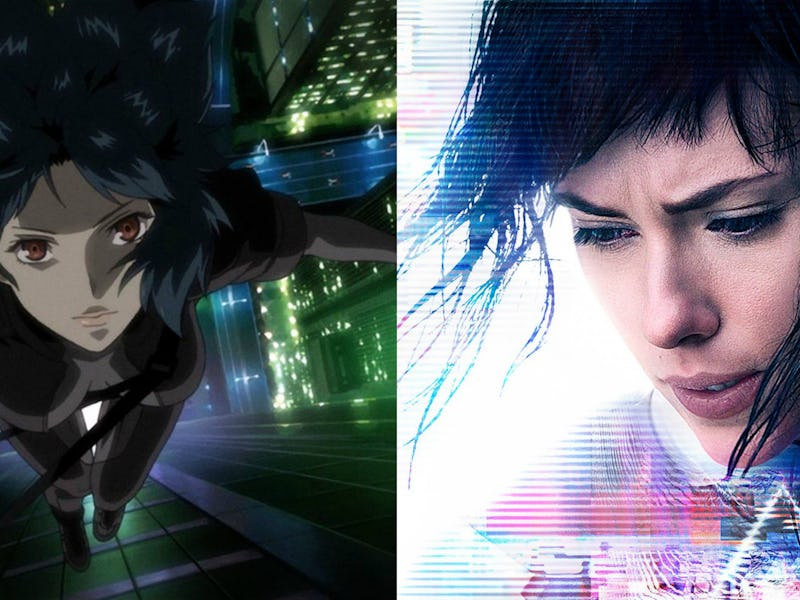This is Why People Are So Upset About 'Ghost in the Shell'
Between accusations of whitewashing and appropriation, 'Ghost in the Shell' is having a lot of issues.

When Scarlett Johansson was cast as the Major in Paramount Pictures’ American, live-action Ghost in the Shell film, outrage ensued across the internet at large. Based on the Japanese manga series of the same name, Ghost in the Shell follows the story of Johansson’s Major (who’s originally named Major Motoko Kusanagi and is Japanese in the manga), a one-of-a-kind human-cyborg hybrid who leads the elite Section 9 task force. Section 9 takes on some of the mid-21st century’s most dangerous criminals and extremists, and Ghost in the Shell weaves a futuristic science fiction tale of self-discovery in the fictional Japanese city of Niihama, Niihama Prefecture.
Accusations of whitewashing the Major — casting a white actor instead of a Japanese one — or comments about cultural appropriation — taking advantage of elements of a culture while not acknowledging that culture — come down to one thing: The source material for Ghost in the Shell is decidedly Japanese. And that’s a fact that, so far, the film seems to be ignoring.
“I don’t think it was just a Japanese story,” producer Steven Paul told BuzzFeed back in June 2016. “Ghost in the Shell was a very international story, and it wasn’t just focused on Japanese; it was supposed to be an entire world. That’s why I say the international approach is, I think, the right approach to it.”
The main character’s name is switched from Major Motoko Kusanagi in the manga to just “Major” in the film, while Niihama, Niihama Prefecture is changed to “an international world,” according to Paul. The rest of the cast for Ghost in the Shell is predominantly Asian, but its lead (Johansson) is not. Despite the reassurance of the cast and crew behind Ghost in the Shell, the world doesn’t seem to feel reassured.
When asked about the controversy surrounding her casting, Johansson told Marie Claire, “I certainly would never presume to play another race of a person. Diversity is important in Hollywood, and I would never want to feel like I was playing a character that was offensive. Also, having a franchise with a female protagonist driving it is such a rare opportunity. Certainly, I feel the enormous pressure of that — the weight of such a big property on my shoulders.”
Johansson’s decided non-answer answer only riled fans up more, prompting accusations of white feminism, focusing on the struggles of white women while failing to acknowledge the added struggles faced by women of color and women who lack other privileges.
And the controversy only deepened when an unverified report about the Ghost in the Shell team trying out VFX to make a white actor “appear Asian” was published by ScreenCrush:
According to multiple independent sources close to the project, Paramount and DreamWorks commissioned visual effects tests that would’ve altered Scarlett Johansson in post-production to “shift her ethnicity” and make the Caucasian actress appear more Asian in the film.
Paramount Pictures acknowledged the tests but said that “a test was done related to a specific scene for a background actor which was ultimately discarded. Absolutely no visual effects tests were conducted on Scarlett’s character and we have no future plans to do so.”
“I think we’ve done the manga comic great honor,” Paul said, adding that Ghost in the Shell’s original publisher, Shirow and Kodansha, has been involved in the making of the film. “We’ve been very, very careful. Obviously, there’s some new imagination, as well. I mean, like anything, when you’re making a movie, you’ve gotta bring your own.”
Ghost in the Shell premieres March 31.